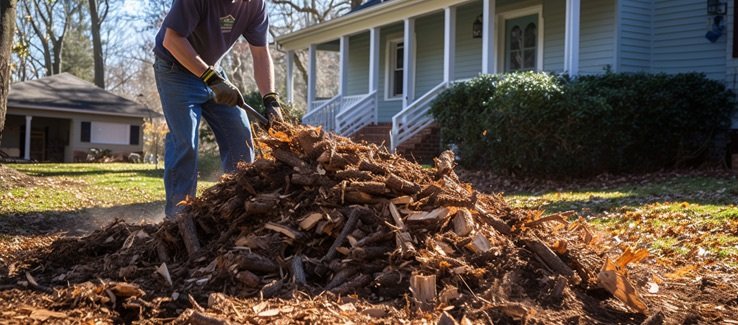In a world where online shopping is booming and customer expectations are higher than ever, ensuring the secure transit of products is essential for business success. Whether you’re a small business owner or managing a large enterprise, delivering products safely to your customers can significantly impact your reputation and growth.
In this blog post, we’ll explore the importance of secure transit, common challenges businesses face, and effective strategies to ensure your products reach their destination safely. We’ll also look into the future of secure transit and the innovations shaping the industry. Let’s get started!
The Importance of Secure Transit in Today’s Business Landscape
In today’s fast-paced business environment, the secure transit of goods is more critical than ever. Customers expect their orders to arrive on time and in perfect condition. Failing to meet these expectations can lead to negative reviews, returns, and a loss of customer trust.
Secure transit not only impacts customer satisfaction but also affects a company’s bottom line. Damaged or lost goods result in additional costs for replacements, refunds, and shipping. Therefore, investing in secure transit practices is essential for maintaining customer loyalty and ensuring business growth.
Businesses that prioritize secure transit can build a positive reputation, foster customer loyalty, and ultimately drive long-term success.
Understanding the Risks Common Challenges in the Transit of Goods
Transporting goods comes with various risks that can jeopardize the safe delivery of products. Understanding these challenges is the first step in developing effective strategies to mitigate them.
Damage During Transit
One of the most common issues is product damage during transit. Rough handling, inadequate packaging, and accidents can all lead to damaged goods. This not only disappoints customers but also incurs additional costs for the business.
Loss and Theft
Lost or stolen packages are another significant concern. Inadequate tracking systems and lack of security measures can result in packages going missing. This not only frustrates customers but also affects the business’s reputation.
Environmental Factors
Environmental factors such as extreme temperatures, humidity, and exposure to moisture can also damage products. Certain goods, especially perishables, electronics, and sensitive materials, require special handling and storage conditions.
Strategies for Secure Transit Exploring Reliable Packaging, Tracking, and Insurance
To ensure the safe delivery of products, businesses must implement effective strategies that address the common challenges in the transit of goods.
Reliable Packaging
Investing in high-quality packaging materials is crucial for protecting products during transit. Poly bags, for instance, offer excellent protection against moisture and dust. They are lightweight, cost-effective, and available in various sizes to suit different products.
Using shock-absorbing materials such as bubble wrap and foam inserts can further safeguard fragile items. Ensuring that packages are securely sealed and well-labeled can also prevent damage and loss.
Advanced Tracking Systems
Implementing advanced tracking systems allows businesses to monitor the progress of shipments in real time. GPS tracking and RFID technology provide accurate location data, enabling businesses to manage and prevent potential issues proactively.
Providing customers with tracking information enhances transparency and builds trust. They can monitor their orders and stay informed about delivery status, reducing anxiety and improving overall satisfaction.
Comprehensive Insurance
Offering comprehensive insurance for shipments protects businesses and customers in case of loss, theft, or damage. While insurance adds an additional cost, it provides peace of mind and financial protection against unforeseen incidents.
Insurance policies tailored to specific business needs and product types ensure adequate coverage and minimize potential losses.
The Future of Secure Transit Innovations and Technologies Shaping the Industry
The logistics and transportation industry is continuously evolving, with new technologies and innovations that enhance the secure transit of goods.
Smart Packaging Solutions
Smart packaging solutions are becoming increasingly popular. These innovative materials are equipped with sensors that monitor environmental conditions such as temperature, humidity, and light exposure. This real-time data allows businesses to take immediate action if conditions deviate from acceptable ranges.
Autonomous Delivery Vehicles
Autonomous delivery vehicles, including drones and self-driving trucks, are revolutionizing the transportation industry. These vehicles offer faster and more efficient deliveries while reducing the risk of human error and accidents.
Blockchain Technology
Blockchain technology is transforming supply chain management by providing a secure and transparent way to track and verify transactions. This technology ensures the authenticity and integrity of shipments, reducing the risk of fraud and theft.
Artificial Intelligence and Machine Learning
Artificial intelligence (AI) and machine learning (ML) are being used to optimize logistics and predictive analytics. These technologies analyze vast amounts of data to identify patterns and predict potential issues, allowing businesses to make data-driven decisions and improve transit efficiency.
Conclusion
Now that we have explored the importance of secure transit and the challenges, strategies, and innovations shaping the industry, it’s clear that investing in secure transit practices is essential for businesses to thrive. By understanding and addressing potential risks, implementing reliable packaging, advanced tracking systems, and insurance policies, and embracing emerging technologies, businesses can ensure safe and efficient delivery of products while building a positive reputation and customer loyalty.
So let’s continue to prioritize secure transit to drive success in today’s competitive business landscape.



